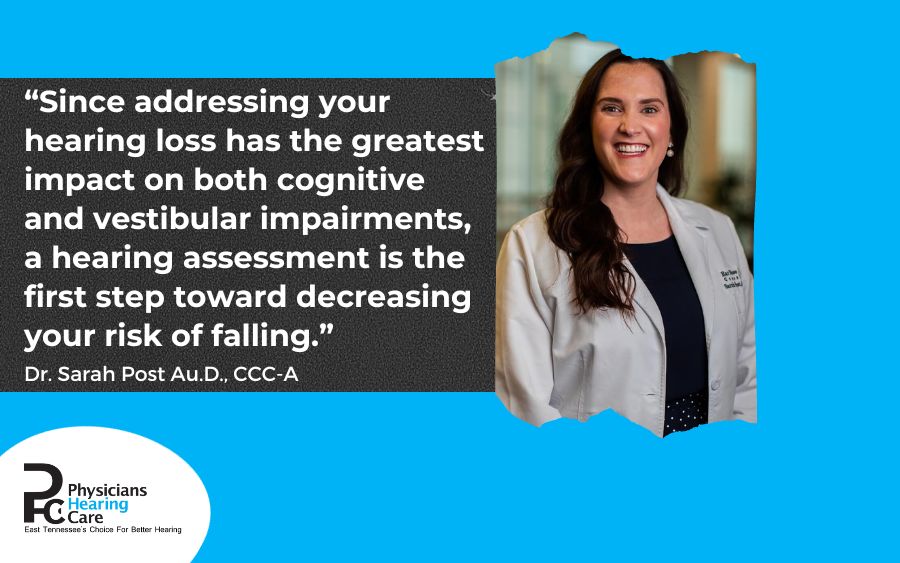If you or a loved one is searching for solutions to hearing loss, you’re probably confused about who to trust and which direction to take.
Every website has a different opinion about what to do, there are multiple options to consider, and a variety of price points; it’s enough to make you feel overwhelmed.
In this article, we want to explore the various options available and give you a broad view of the entire landscape as well as share an honest overview of the benefits and pitfalls associated with each option.
What You Need to Know before Looking at Your Options
To begin with, there are no “one-size-fits-all” solutions for addressing hearing loss.
Your best option for treatment will be based upon your specific hearing diagnosis, unique circumstances, lifestyle, and budget. Here are a few things to think about as you survey the landscape of hearing loss treatment options:
- The specific type and severity of your hearing loss
- Do you enjoy an active lifestyle? In what types of environments do your activities take place?
- Do you prefer in-person or remote support?
- Do you demand the best of the best, or are you looking for budget-priced solutions?
- Do you want to partner with a locally owned provider over the long term, or is dealing with a
- corporation and a variety of different people okay?
Armed with an understanding of what you’re looking for makes it easier to narrow down your choices to the options that are right for you.
A Quick Overview of Seven Treatment Options
Your options for treating your hearing challenges come at a variety of price points. Here is a quick overview of the various classes of treatment options and how much you can expect to pay for each:
- Earphones with a Cell Phone App – Price: $0 – $250
- Over-the-Counter (OTC) Hearing Aids – Price: $800 – $2500
- PSAPs (Personal Sound Amplification Products) – Price: $79 – $1250
- Online Direct-to-Consumer Hearing Aids with Audiological Remote Support – Price: $1850 – $2400
- Big Box Retail Stores – Price: $1250 – $4000
- Audiology Clinic – Price: $2500 – $7500
- Hearing Loss Surgery (Cochlear Implants) – Price: $30,000 – $50,000
Some obvious solutions stand out if the primary focus of choosing a hearing loss solution is related to price, but each addresses a variety of challenges and provides you with very different solutions.
Let’s take a closer look at what you’re actually getting for the investment you make into each class of hearing loss treatment solutions.
#1 – Earphones with a Cell Phone App
If you have no budget and simply need some form of amplification in certain environments, then you can turn your wired or wireless earphones into amplification tools.
What you are doing is making use of your cell phone’s microphone to pick up the sounds around you and amplify them. Various apps offer free amplification features while others provide more assistance by controlling background noise, enhancing speech, reducing own-voice amplification, and more.
To get the most advantages and greater control over the sound profiles you select, you will have to pay an annual subscription, which will cost around $60.
Pros: Inexpensive, uses technology you already have
Cons: Requires good quality earbuds or earphones, does not address your specific hearing loss (amplifies everything), includes no support or care
You could compare this solution to using a magnifying glass for a vision problem; it works for certain situations but doesn’t address the core hearing loss issue.
#2 – Over-The-Counter Hearing Aids
When the FDA began to allow hearing aids to be sold over the counter, it failed to define what classes of hearing aids were included. Consequently, many people believe that prescription hearing aids are now available OTC and they can buy a ready-made solution to their hearing challenges.
The biggest drawback to OTC hearing aids is the fact that people are apt to self-prescribe a solution to their hearing loss without actually knowing the type and severity of hearing loss they are attempting to address.
The only way to know the type and severity of your hearing loss is with a hearing test performed by a professional.
Many big consumer brands like Bose, Sony, and Jabra have entered the market with products ranging from $500 – $1500.
Pros: Competitive pricing, easily accessible, purchased from home
Cons: Not tailored to your hearing loss, requires no hearing test, must fit them yourself (uncomfortable), no support, no damage/loss warranty, only work with mild to moderate hearing losses
Continuing with the comparison to your vision, OTC hearing aids are like reading glasses. They help in certain situations but are a generic option that isn’t unique to you.
#3 – PSAPs (Personal Sound Amplification Products)
PSAPs are an amplification tool. They input sound through a small built-in microphone and then make it louder into your ears.
Prices for PSAPs start at around $79.99 and can cost over $1000. They provide a one-size-fits-all solution if you have a very mild hearing loss, but there is little room for adjustments, so all sounds are amplified equally.
Pros: Easy access, low price
Cons: One size fits all, no testing required, fit them yourself (uncomfortable), no support, amplifies all sounds equally
These are also like reader glasses but the cheaper end of the selection. They help in very specific environments without background noise, which is amplified along with all other sounds.
#4 – Online Direct-to-Consumer Hearing Aids with Remote Audiological Support
What draws the attention of a lot of consumers to these direct-to-consumer solutions is the fact that you don’t have to visit a doctor, they’re reasonably priced, and the process is easy and comfortable.
These devices address commonly used gain and sloping hearing loss targets, usually via a connection to a cell phone app where you can make minor adjustments yourself or via a video call with one of their online audiologists.
Their convenience is causing them to gain popularity. Your hearing aids come preprogrammed based on your online hearing assessment and are adjusted during follow-up remote support calls.
Pros: Easy to purchase, convenient, technology from reputable manufacturers, some remote audiological support, money-back guarantee
Cons: Online hearing assessments are often inaccurate, nobody physically looks into your ears to determine other causes of hearing loss, no in-person support, insurance will not help pay for them, you usually speak to a different audiologist each time.
This option is a bit more viable due to the fact that your specific hearing needs are being considered, though with less than accurate testing, and you are getting some support from an actual audiologist.
#5 – Big Box Retail Stores (Costco/Sam’s Club, Etc.)
You can purchase professional hearing aids at your local Costco or Sam’s Club, which has an internal hearing aid center. This is a step in the right direction because you are getting more professional hearing aid technology that is customized to address your specific hearing challenges.
You will have a hearing assessment before purchasing your hearing aids and the hearing aids you receive will be from a reputable manufacturer, Kirkland. Your hearing aids will be professionally fitted by a trained hearing aid dispenser, and they will come with a 1 to 3 year warranty.
Follow-up care and support in a retail environment can be a challenge, especially if you’re dealing with damage or loss issues that are covered on your warranty.
Pros: You get a hearing test, in-person fitting and support, professional level technology, a repair and loss warranty.
Cons: The hearing exam is not comprehensive, not a lot of ongoing personal service, you wait in line for support, your insurance will not provide assistance, you will have to be a member of the club.
Although this option is heading in the right direction, it still comes up short when it comes to truly addressing your overall hearing health.
#6 – Partnering with a Local Audiological Clinic
This is the traditional approach, which involves a comprehensive hearing assessment designed to evaluate your overall hearing health. The major difference is that your audiologist will not begin with the assumption that you need a hearing aid, so ALL causes and treatment options will be explored.
Someone physically examines your ears to be sure that they’re not blocked by earwax, a foreign object, inflammation, or other obstructive issues that can be corrected without hearing aids.
Your hearing exam will provide the specific data needed to address your unique hearing challenges, and your audiologist will offer you a broad range of solutions from a variety of the top manufacturers in the industry.
Your hearing aids will be fitted by a professional, you will receive ongoing support and care over the long term, such as cleanings, readjustments, repairs, and access to a team of experts with in-person appointments usually available within 48 hours.
Extended warranties and protection cover damage and loss, and insurance may provide support, or you can use our payment plans.
Pros: Personal treatment and care by a doctor of audiology, best hearing aid technology, personal ongoing support focused on your hearing health rather than your device, warranty, maintenance, repair, insurance accepted
Cons: You will have to attend physical appointments, you will have to invest a little more money.
Returning to the eye glasses comparison, choosing this option is like going to an optometrist for prescription glasses that specifically address the unique challenges with your vision.
#7 – Hearing Loss Surgery (Cochlear Implants)
This option is only available to individuals with a profound hearing loss who qualify for it.
Surgical implants are used to help those who are not helped or receive only limited help from hearing aids. An evaluation involving a doctor of audiology, a surgeon, and an anesthesiologist is necessary to determine whether the surgery will return the anticipated results.
The cost of electronic implants involves surgeons, facilities, anesthesia, and device programming, which can add up to between $30k and $50k. Fortunately, the implants are usually covered in full or part by your health insurance.
Your Next Step
Not all of the treatment options available are able to properly address your specific hearing challenges.
Attempting to correct them with hearing aids when you don’t really need a hearing aid or with an inadequate or improperly programmed hearing aid is like trying to force a square peg into a round hole.
Your best option is to talk to a professional at Physicians Hearing Care whose first priority is your hearing instead of assuming that any type of hearing technology is the best or only solution.
If you’re ready for an objective evaluation of your hearing challenges, then “Request a Callback” and a member of our team will call you back to answer your questions and/or address your concerns, or give us a call at the eastern Tennessee location near you.





